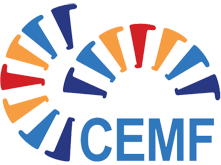
The University of Manitoba – Canada's Pioneer in Higher Education
Established in 1877 as the first university in western Canada, the University of Manitoba in Winnipeg has had over a century to fine tune its programs and offer students a more enriching education. Being the largest university in the province with an average enrolment of 25,000 students per typical year, there are more undergraduate/graduate programs, personnel, resources and courses available to meet students' needs. Here are some unique features that set the University of Manitoba apart from other Canadian universities:

• University 1 Program: Specific to first-year undergraduate students, this program provides course flexibility and personal support that help guide students towards their academic goals while easing their transition to university life.
• Manitoba's only research-intensive institution: Ranked 13 out of the top 50 Canadian research universities, the University of Manitoba possesses the staff, facilities, experience and resources to be a leader in research and innovation. For example, the joint partnership between research corporations and the university has led to the development of the 100-acre Smartpark Research and Technology Park.
• Affordability: Compared to tuition costs of most Canadian universities, the University of Manitoba has lower fees while still living up to high educational standards.
• Rhodes Scholars: the university has produced 92 Rhodes Scholars and counting; more than any university in western Canada.
Our Faculty of Engineering
As the first and only university in Canada with a faculty-wide Research Chair in Engineering Design, we are committed to producing "design-ready" graduates, with students receiving design instruction as early as in their first year. Six fully accredited Bachelor of Science in Engineering programs are offered at the undergraduate level through five departments. In our Biosystems and Civil Engineering programs, our students can choose to specialize with the "Environmental Option," while the Mechanical Engineering program has the "Aerospace Option." Master's and doctoral programs are available in the fields of Biosystems, Civil, Computer and Electrical, and Mechanical Engineering.

Our faculty was the first in North America to appoint "Engineers-in-Residence" (EIR). EIRs are engineers with extensive field experience who play an integral role in assisting faculty ensure that design curriculum remains on the cutting-edge and applicable in the industry. Since our EIRs are not required to conduct research or teach full courses, our focus is instead centralized on quality design instruction.
Another example of the University of Manitoba keeping pace at the forefront is the $56 million Engineering and Information Technology Complex constructed in 2007. The EITC is now home to the Engineering faculty, and the 2011 renovations on our state-of-the art labs and classrooms only enhance our learning environment.
To stimulate an increase in the percentage of Aboriginal engineers in Canada, we proudly offer the Engineering Access Program (ENGAP) to students of Aboriginal descent who want to study Engineering. This program provides students with support and resources through scholarships, financial aid, academic preparation and free tutoring. ENGAP at U of Manitoba has produced more Aboriginal Engineering graduates than any similar program in Canada.
Women in Science and Engineering (WiSE)
WiSE is an access program for women Engineering students who are passionate about encouraging young women to choose engineering as a profession. Our students go out to schools across Winnipeg and give inspiring scientific presentations to girls aged 8-13. WiSE also holds fun curriculum-based workshops and a popular summer camp called Kid-Netic Energy. One remarkable event organized by WiSE is called Canstruction. Every year, WiSE women and girls get together at a public venue and build an eye-catching structure out of donated canned foods. While the structure provides visibility to women in Engineering and an opportunity for girls to bond through teamwork, a local food bank in the community benefits from the donation of canned goods.


